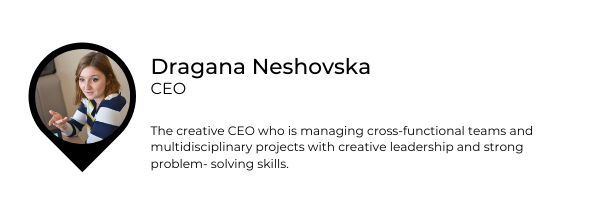Contents
User Experience (UX) and Interaction Design (IX) are becoming more and more important in today’s digital world. The way people use your site and the interaction between users and products can determine the success of your business venture. We should add user interface (UI) to this successful formula too. It’s because people’s choice of tools for interaction on your website plays a significant role.
But, what exactly makes successful UX/IX important? Is the investment worth it? Let’s highlight a few examples where these digital design concepts can help business owners, especially the ones focused on product development.

How UX/IX with design thinking can help you?
Boosted productivity – If users have a better experience and they are able to interact with the product without any hassles, product owners can expect increased productivity.
Attracting new customers – Surely, satisfied loyal customers are crucial for a successful business, but the ability to get new customers with the help of new products can make a difference between your brand and other brands on the market. This is exactly what people can expect from successful UX/IX.
Keeping existing customers happy – As we have already mentioned, it’s not difficult to keep customers happy and satisfied when you are creating a website and a product that’s easy to use and attractive.
Shorter product development cycles – when the design is done in the right way, you won’t spend time resolving issues later in the development cycle.
These are some of the advantages of taking UX and IX seriously. But, how can we create these designs and experiences in the best way? The obvious answer is by following the latest trends and design thinking is definitely a trendy thing.
What is design thinking and how does this activity support successful UX/IX?
Design Thinking is the methodology that offers the most relevant insights for creating a smooth user experience. And for any type of digital product. There are no unpleasant surprises and unforeseen projections when you are using design thinking to come up with successful user experience and interactive design.
During the process of product development, design thinking providers proper communication and teamwork between designers and users.
What’s better than knowing what works for customers and what doesn’t work? If you know the answer to this question, you won’t have to make changes in the development process in the future.
Every company has a basic idea about who their target personas are. However, it’s design thinking that helps you empathize with real users.
Design thinking is about thinking outside the box without creating a pattern that can be used in different situations and with different businesses. This concept allows designers and product strategists to learn about users with the help of testing.
Proper tests will unveil insights that redefine the problem and create new ideas for the project. As previously mentioned, empathy is important here too.
Through UX/IX with design thinking, you will empathize with end-users and understand their problems and needs. So, we have mentioned a few points that connect design thinking with user experience and interactive design. And we will use the rest of this article to elaborate.

Observe and empathize
If you want to understand the problem that customers have (their needs and requirements), you have to observe and empathize with them. Market research and design are powerful tools that can help you in this process.
The process starts by identifying potential customers. Next, you’re analyzing their behavior and finding out what they really need – what’s important to them. Design thinking is usually focused on smaller groups of potential customers because this is a very time-consuming process.
On the other hand, market research analyzes a huge amount of information to understand the current trends, competitor activities and more.
Ideation
The formation of ideas and/or concepts is another element of design thinking. Without fresh ideas, you won’t be able to offer a good user experience. The main objective at this point is to create not one or just a few ideas – you have to come up with many ideas. Remember that you have to use your creativity and imagination and avoid limitations.
It’s also wise to question everything because, in this way, you will be able to separate helpful ideas from useless ideas. Or, ideas that are difficult to turn into reality.
Many people make the same mistake at this stage – they are focused on their early ideas. Instead of trying to figure out how to realize these ideas, you should look for other ones.
Prototyping
To be honest, most designers have a few prototypes created for the same project. But only one of them becomes a product. So, prototypes don’t end up as real products in most cases.
But, prototyping is useful for design thinking and ultimately for user experience and interactive design because it supports ideas. It lets designers explain ideas and get a clearer picture of how a future product might look like.
Designers can use a variety of tools to present these ideas – presentation, image, sketch, etc. One of the basic goals of this phase is to ensure that the issue is understood properly.
Testing
In the end, we have the testing phase. It’s interesting that the basics of this phase depend on the complexity of the prototype. This time, the main point is to encourage the target audience to try the prototype.
But, they have to try it in (almost) the same way in which they would use if they bought the product themselves. Video recording or classic observation is highly recommended at this phase.
In case the product is already offered on the market, A/B testing and surveys can help you test the effects.
Don’t forget that design thinking is an innovative process and there are no strict rules you should adhere to when using this concept to create successful UX/IX.


